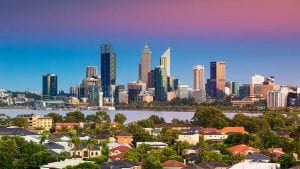Australia has long been a rich source of ideas, but a barren land for those seeking venture capital to help develop them. Just to give an example, some $9 billion is funneled into research every year, but only around $100 million is available for commercialisation, creating what Graydon Smith, the manager of venture capital funds at AusIndustry, describes as a “massive hour glass effect.” Little wonder, then, that so many Australian technology developers and IT and cleantech entrepreneurs beat a path to the US, and Silicon Valley in particular.
That bottleneck is about to be eased following a major of injection of new funds into the VC market, specifically for renewable energy and cleantech developments. Southern Cross Venture Partners, the US-Australian VC fund manager which won the government’s Renewable Energy VC mandate with the help of $100 million from China’s Softbank, is expected to announce its first investments in the coming weeks.
Just to confirm the hour-glass analogy, Southern Cross managing director Gareth Dando says the company has been flooded with “hundreds” of applications, proposals and inquiries since the mandate was first announced last December. “There has been an avalanche of interest. People have been waiting on this for a while,” Dando told RenewEconomy in a rare interview. Interestingly, a lot had come from biofuels and waste-to-energy technologies, with a range of others relating to wind, solar, and enabling technologies. “We are seeing a lot of genuine innovation,” he said, before adding: “We have no particular view on which technologies (it would favour).”
The Renewable Energy VC fund will focus on generation, along with hybrid solutions and enabling technologies (such as batteries and grids). But Dando said the size of the fund – $200 million – is significantly bigger than any that have preceded it. “The other funds have not had the capacity to make the investment that we can… so it will change the game in that respect, and give them more certainty about the availability of funding.”
Essentially, it means more capital over a longer time frame. Dando told the Eco Innovation Forum in Sydney on Wednesday that the fund envisages making 10 to 15 different investments, and could invest up to $10-$20 million in each of them, over several rounds, targeting companies with revenues of up to $20 million. It will also consider smaller investments. It has a longer time frame than most VC funds, with an investment term of up to 13 years. “We are investing in stuff that can take a long time to come to fruition,” he said.
Dando says the role of Softbank was important. While Silicon Valley was the centre of the universe for IT and social media, the energy industry was more focused towards China, which offered more opportunities to sell technologies and develop business. “We see this as more of a Pan-Pacific opportunity,” he said. He added that likely strategic partners included a range of large energy companies, equipment manufacturers and industrial groups.
Interestingly, another VC fund involved in the renewable energy space, CVC Ltd, said it was particularly attracted to technologies that could reduce the cost for consumers – such as solar PV, energy efficiency technologies, and distributed generation, including gas.
CVC Investment Manager Philip Galloway told the Eco Innovation Forum the company was sitting on “a lot of cash” following recent exits, including from the ASX-listed Environment Group just last week. It already has investments in Wind Corporation, wave and tidal energy developer BioPower Systems, and a battery technology company.
CVC, which invested in geothermal aspirant Geodynamics before its listing, as well as bio-plastics group Plantic, said the sharp falls in the cost of solar PV in recent years had been bad for R&D and manufacturers, but presented excellent opportunities for those technologies or business models that could deliver energy to the customers cheaper than the grid.
He said it was clear that cost reductions and innovations in financing, along with the rising price of “black power,” meant that consumers – both retail and commercial – were looking for alternatives. Shopping centres and industrial parks were looking at long-term power purchase agreements that locked in the “green line” (his reference to the lower cost of green energy) and sharing the cost and benefits among all leaseholders.
“We like everything consumer-facing,” he told the forum. “Consumer demand is out there for ideas and ways of living greener – it is clear that that has survived all the brouhaha over carbon taxes and politics in Canberra. People want to live cleaner and simpler lives. In LA airport, where I was yesterday, they are advertising Nissan Leaf (electric vehicles), GE is advertising wind turbines. We don’t see so much of that being tapped into yet in Australia.”
He also noted that the industrial response to energy efficiency solutions was “incredibly slow”, particularly compared to Europe and the US. But any pitch to those large energy users had to be about saving money. “If you pitch to them on being green, nothing much will happen.”







